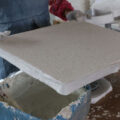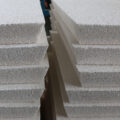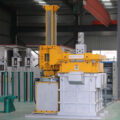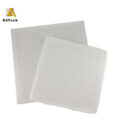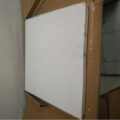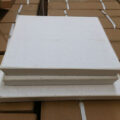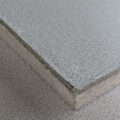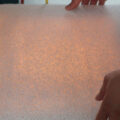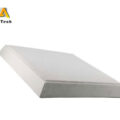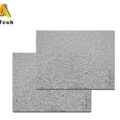The filtration capacity (the efficiency of removing inclusions) depends mainly on the mesh roughness (number of meshes) formed in the aggregated mesh components. Therefore, in order to remove about 10-25 μ m small inclusion particles, the refractory aggregate mesh member has fine mesh, in particular, more than 2 openings per inch, more preferably 6 or more openings per inch. However, in the presence of a large number of inclusions, the mesh size is too small to cause practical problems, that is, in relatively short-term operation, the molten aluminum filter is blocked, thus shortening the life of the filter. Therefore, the mesh fineness is preferably less than 10 openings per inch to prevent reducing the molten aluminum filters life.
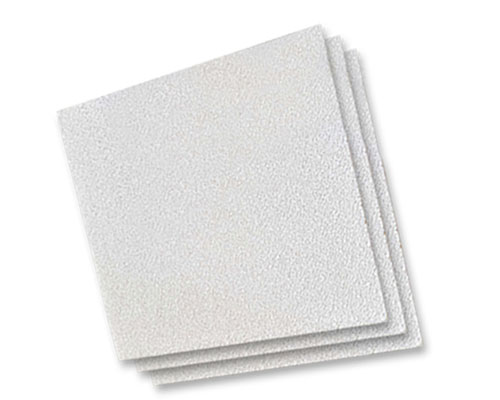
As refractories for aggregate mesh members, any refractory that can form a mesh member may be used. Conventional refractories can be properly selected from alumina, magnesia, silica, mullite, silicon carbide and their mixtures. The clay or slurry of these ceramics is then formed and baked into porous bodies of suitable shape with the desired mesh size, such as noodles, honeycomb and tubular shapes, to form a mesh member. The proper shape of the mesh member enables the obtained filter to have the strength required to resist thermal shock and wear caused by molten Al.
Alternatively, molten aluminum filters with the desired pores can be made by:
1) mix small pieces or beads of plastic, such as foamed styrene, into the kneading or mixed clay or slurry of the ceramic.
2) To form clay or grout in proper shape;
3) The molded body is burned off with a plastic sheet or bead. The burned plastic flakes or beads leave holes in the baking pan for the opening of the final filter.
Compared with the above method of making ceramic into surface or honeycomb shape, the required mesh with more sufficient fineness, more uniform opening distribution and more uniform opening diameter can be obtained by using this method. For example. As a result, the molten aluminum filters with plastic sheets or bead obtained by this method can remove finer inclusion particles about 10 to 25 μ m more effectively.


